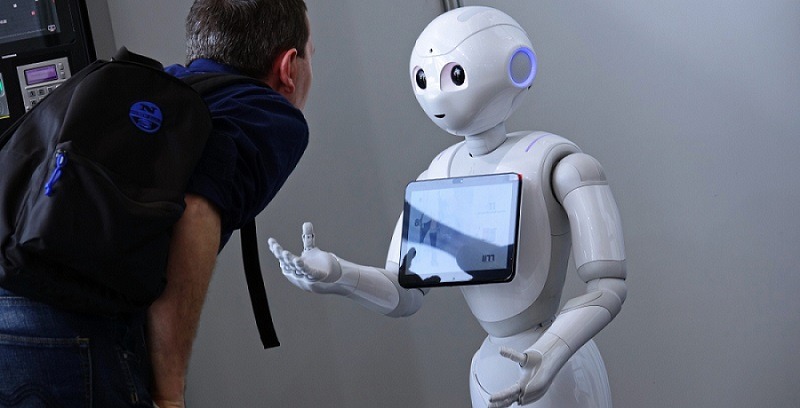Discover the five missions of the learning companion
In the previous note, you discovered Hal, an example of what a learning companion of the future could be.
Today, you are going to decipher five missions related to these future learning companions. Furthermore, you will explore the technological bricks that are already available to carry out these missions. You also test Albert, the Cegos digital tutor, which uses AI to let you learn by doing and boosts the performance of a learner in a work situation.

Discover the missions
These learning companions of the future are going to play a key role insurrounding learners’ learning experiences. Here are five of their missions:
- Curation and analysis of mission or employment opportunities depending on personal preferences and capabilities, today and tomorrow. Their aim is to identify missions/projects/companies that will enable learners to take up new professional challenges (and, by so doing, to learn new things).
- Curation of appropriate content: find the right learning resources in different “ecosystems” (open/public, structured/unstructured data, etc.).
- Monitor proof of the acquisition of a new skill over time, with publication of micro-accreditations authenticated via blockchain.
- The ability to find the right learning partners (colleague, expert, peer, etc.) to take up these challenges (thereby playing the part of the LNO: Learning Network Orchestrator).
- Support and feedback via interactive functions (natural language processing, video analysis, chatbot). The aim is to monitor the learner’s progress and make sure he is on the right track.
AI serving the learning companion
In this role as the learner’s personal assistance, AI forms part of abroad environment of resources and actors. It also takes a constructivist /socio-constructivist approach. Moreover, like a virtual concierge service, itcan provide back-up for all non-training-related tasks:
- Registration for relevant training courses
- Publication of certificates, etc.
What will make learning companions truly intelligent is the ability topush the right content or promote human interaction at the right pace andaccording to the best moment for learning.
As machine learning (a programme that teaches a machine to learn automatically) plays its role, bots will soon be able to spot the most frequent difficult situations for employees with a view to anticipating them. Thus, according to the authors of « The Fall of the Human Empire : Memoirs of a robot » (Grasset, 2017), the Bot-Net (a convergence of robots and the Internet) will emerge by the year 2026. It will be able to answer our questions without our having to surf the Web and sometimes without our even having to ask the question!

In this field, the members of Cluster inno by Cegos have formulated the following: “The learning companion of the future is a coach, mentor and tutor. It learns our preferences by gleaning them from the social media. It asks questions, establishes contact and provides reliable seeds of learning (no deep fakes). Finally, this digital tutor provides positive or constructive feedback to maintain motivation over time.”
Dream or reality?
These AI use cases might look like science fiction! Yet differenttechnological bricks for learning companions already exist. For example:
– The personal assistant (Alexa,Google Home, etc.) with voice interaction and curation on the Web,
– Applications like Orai that helpyou develop your public speaking abilities. Another example is Edzo, whichoffers personalised follow-up and generates interaction with experts/peer toensure progress.
– Adaptivelearning (Knewton, Area9, etc.) supporting personalisedmanagement of the learning experience,
– Automatedpersonality and skills evaluation, like Cristalor Matchedu. They help you interact with other according to personalitytraits – your or those of your counterpart,
– Automatedrecruitment and management of employment opportunities(Lymia, Mya, Tengai, Zara, etc.) with robot profile analysis andinterviews, and behavioural analysis,
– Intelligent curation tools like Edcast or Filtered which spot content of real interest to you,
– Badgeproviders like Mozilla or BCDiploma, combined withblockchain technology. They offer a secure model for collecting and sharingskill indicators. This also covers academic files, badges and certificates aswell as letters of recommendation, etc.
A date with Albert!
So Hal is on the way and is going to really upset learning practices. Inthe very short term, experiments are flourishing.
For example, Cegos has developed Albert, the first digital tutor thathelps you take up an operational challenge at your workplace. For example, withAlbert you can successfully prepare your next public presentation. With Albert,you “learn by practising”. Based on your situation, it asks you questions andgives you key tips for reaching your goal.
Albert is currently in the prototype stage, hosting weak artificial intelligence as clarified here. Moreover, it has the ambition of learning from its interactions with you, to become more intelligent!

In a future note, we will cover another training use field for AI: supporting trainers.
This note was written by Fabienne Bouchut and François Debois.








